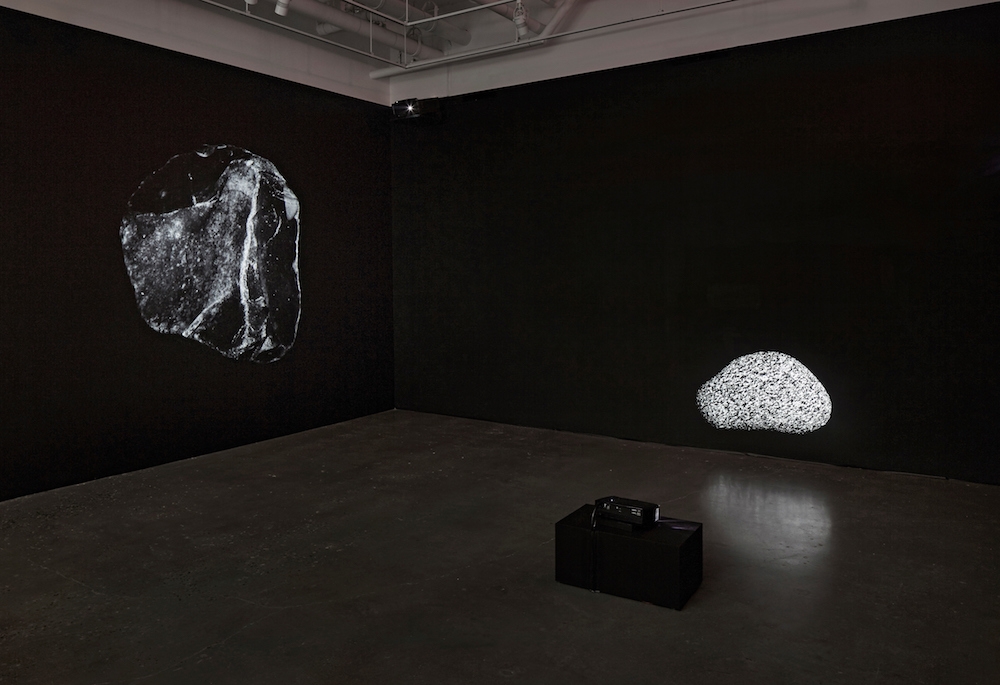Cristin Tierney, New York 19 January – 4 March
Peter Campus, a restless and too-often-overlooked pioneer of video art, emerged from a circle that included Robert Smithson, Nancy Holt and Robert Grosvenor. During the early 1970s, influenced by Yvonne Rainer, Joan Jonas and Bruce Nauman, he mounted installations using then-nascent video-editing technology to layer and dissolve images, as well as closed-circuit cameras that confronted people with images of their bodies screened at odd angles. Later in the decade he turned to still photography, realising large projections of dimly lit faces that dominated gallery spaces and bore down on viewers with an enigmatic and confrontational intimacy. He showed in New York at Klaus Kertess’s seminal Bykert Gallery and then with Paula Cooper; but he withdrew from the scene in 1979 and began taking black-and-white photos of landscape details that, at the time, seemed old-fashioned.
Around 1987 he began a series of large-scale projections of shells and stones that recalled his series of faces and his photographic work. This new series united and clarifed the underlying logic behind what had previously seemed disparate activities. Five of these pieces, all of stones and all dated 1987, are projected at Cristin Tierney in a room divided by a half wall. They provide barely enough light for visitors to manoeuvre, transforming the space into a sort of maze in which each rock, its outlines hazy, floats on a black field that seems to extend ad infinitum. It is impossible to intuit their scale. Surface details dissolve into abstract patterns of ridges and divots, speckles and bands. Blacks read as negatives, greys as positives, indicating that some materials reflect more than others and underscoring that what we are seeing is ultimately not an object but light.
What is important, then, is not the rocks or the images thereof, but the spaces around them: the field of the projection that isolates them, the room in which the works are presented and the darkness with which they visually merge. Viewing becomes a spatial, physical experience that compresses the geologic time implied by the surface details of the stones, a hint of some past process of erosion or eruption, the photographic moment at which each object was recorded and the transitory duration in which the images are presented and seen. Titles such as schism for a stone with a ridge down its centre, or half-life, both suggest lithic occurrences and open each piece to individual readings, creating tension between the objective and the subjective.
As in Campus’s earlier videos, photography and projection slip a stage between object and eye to implicate vision as contingent, abstract and always dependent on time and space. Campus’s aim here does not seem to be deconstruction per se, but a poetic resonance, in a Buddhist sense, of the vastness outside of momentary experience. In a 1976 interview Campus said, ‘It’s basically my understanding that we are temporarily just a ash of light in the void,’ much like a simulacra of rocks isolated on dark fields in a barely lit gallery.
